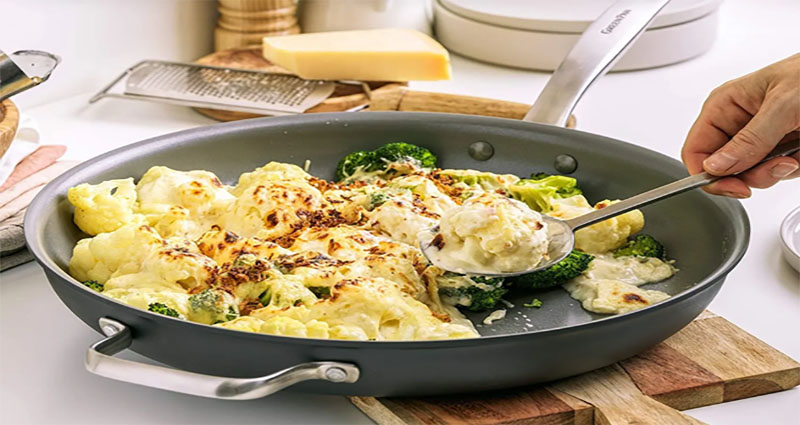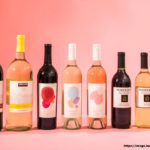Unlike Teflon, ceramic cookware is free of PTFE and PFOA, which have been linked to health issues. It’s also non-reactive, which means you can cook acidic foods like tomatoes and lemons without worrying about the cooking surface absorbing the flavor or changing the texture.
Use only wooden or silicone utensils with your ceramic pan, as metal can scratch the coating. Also, avoid high heat on these pans, as the oven-cured ceramic coating is not designed for searing and browning.
Nonstick
Ceramic sauce pans are nonstick, allowing you to cook low-fat meals without added oils or butter. They can also be used over higher heat, perfect for cooking acidic foods like spaghetti sauce or garlic chicken. Additionally, ceramic-coated cookware doesn’t absorb odors or flavors from your food, which helps keep your kitchen smelling fresh and clean.
As a bonus, ceramic cookware is made using nontoxic materials and is completely free of PFOA (polytetrafluoroethylene), which was found to be toxic when inhaled or ingested. This makes it a great alternative to Teflon-coated pans, notorious for their short life span and toxic fumes. To extend the lifespan of your new ceramic pots and pans, use them with wooden or plastic/silicone utensils instead of metal ones. This will prevent the surface from becoming scratched and worn down. Additionally, let your ceramic cookware cool before running it under cold water.
Non-Reactive
A non-reactive pan is a cookware that doesn’t react with acidic ingredients. It also prevents your food from tasting metallic. The most common non-reactive pans are made from stainless steel, tin, or enamel. However, some may have a combination of materials, such as copper or aluminum, covered with tin or stainless steel.
A non-reactive pan is necessary for anyone who prepares acidic foods such as jams, fruit juices, and citrus meals. These substances can corrode reactive metals and cause nicks and dents in the cookware. Always use gentle cleaning agents when washing nonstick and ceramic pans. Avoid using abrasive sponges or steel wool, which can ruin the coating and scratch the surface. Let your cookware soak for half an hour to loosen stuck-on food. It is also important to use wooden or plastic/silicone cooking utensils instead of metal ones. The metal utensils can scratch the surface and expose your food to toxins.
Easy to Clean
The ceramic coating on these pans has a natural slickness that makes food glide right off the cookware. It also has great heat retention, so you can easily simmer soups and sauces on the stovetop or use these pans to steam vegetables or make omelets.
You can scrub the surface with hot water and baking soda if stubborn food particles are stuck. You can also soak the pan in warm, soapy water for a few minutes to loosen any burned-on residues. Then, gently scrub the surface using a nylon sponge or scrubber. Rinse the pan well, and let it dry completely before you store it.
You can use enzyme solutions that speed up chemical reactions and cut through grease effectively for even more efficient cleaning. These cleaners can be found in stores that sell laundry detergents and fabric softeners, but you can also make your own at home. To protect your ceramic cookware, always use wooden or plastic/silicone cooking utensils to prevent scratches.
Dishwasher Safe
Even though many ceramic nonstick pans have a dishwasher-safe label, you should hand wash them to prolong the life of the coating. Harsh detergents will not damage the nonstick coating.
Avoid using metal utensils when cooking on these ceramic nonstick pans to prevent damaging the ceramic coating. Stir your ingredients with wooden or silicone spoons. Avoid overheating ceramic nonstick pans, which will cause the coating to peel off and contaminate food.
Ceramic nonstick pans are a great option for traditional Teflon cookware. These pans are dishwasher-safe, lightweight and easy to maintain, making them a great choice for modern kitchens.









